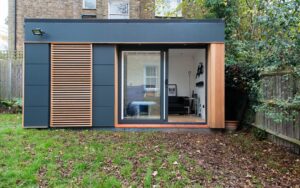Two years back, we all wished if we could stay home and work. Today, when we are stuck at homes struggling to work, we understand the importance of offices.
Working from home doesn’t match the vibes of the environment and the work vibes of the office. However, most of us have accepted the fact unwillingly and turned our homes into individual offices.
Working from home can save you travel time and cost but brings in a different set of challenges. Finishing work on time without any help needs concentration and dedication. In the office, everyone talks about the factors that motivate us to work harder. But at home, there are a lot of distractions. You need to lock yourself in a room to avoid nuisances and focus on your work. I am sure you do this. But you’ll still be able to hear the noises coming from outside the room. So, how can you soundproof your home office?
Solid door
Install a solid door in the room to block noises from outside. The hollow-core doors are popular because of their affordability but the sounds can easily travel through them. Opt for solid wood doors as they are good sound-absorbers. They prevent outside noises from entering the room.
For soundproofing, there are multiple ways available. Depending on your budget and need, you can choose a suitable option. If you’re tight on budget, you can add vinyl weather stripping that comes with an adhesive and bottom sweep or threshold seal. This was initially meant for preventing rainwater from entering rooms. However, the newer models have helped a lot to soundproof the room.
Close the air vents
You can be making a huge mistake if you’re avoiding the air vents in your room during the process of soundproofing. These are the biggest criminals as they let in most of the noise. You wouldn’t want to leave them undone. Instead, block these vents with material or foam.
Another way of blocking these air vents is to build a sound maze. This will reduce the noise and maintain the ventilation in the room.
Soundproof the windows
Windows are another major source of the noise. You need to soundproof them as well. To do this, you can opt for cheap or expensive ways. The cheap way is to buy soundproof curtains and use them from the ceiling to the floor so all sorts of noises are blocked.
The expensive way is to buy soundproof windows and get them fitted so that no noise is allowed inside the room.
Work on the flooring
If you have wooden floors, the noise might echo. To avoid this, place soft rugs and carpets in the room. You can also use them outside your office, so the noise is prevented from entering the room.
If the disturbance is coming from underneath your room, you can place a sound deadener mat beneath your rug.
Soundproof the ceiling
This is a time-consuming process so you should only opt for it if the sound is coming from above your room. You need to attach a drywall to the ceiling. For this, you need to build a frame and link a layer of drywall and then attach it to the ceiling.
Sound-absorbing paints help a lot
If you’re already looking to paint your walls and soundproof the room, take the combination of sound-absorbing paints. They reduce noises by 30%. You can also choose acoustic wall foams. They increase air resistance and hence, you cannot hear much noise.
Prevent echoes
Echoes can certainly be annoying. The secret behind this is to use thick and soft materials in your room. They can also help you to prevent echoes. Put up a rug on the floor. This rug will absorb the occurring sounds instead of reflecting it.
Another effective way can be to put some canvas art paintings on your wall or cover the windows with curtains to prevent sounds from entering.
Over to you…
In the last five years, the rate of people working from home has increased by 44%. Under such scenarios, we understand the need of soundproofing the rooms. You can use the above techniques and seek help from https://megasorber.com/ for your further queries.
Read more:
7 Ways to Soundproof Your Home Office














